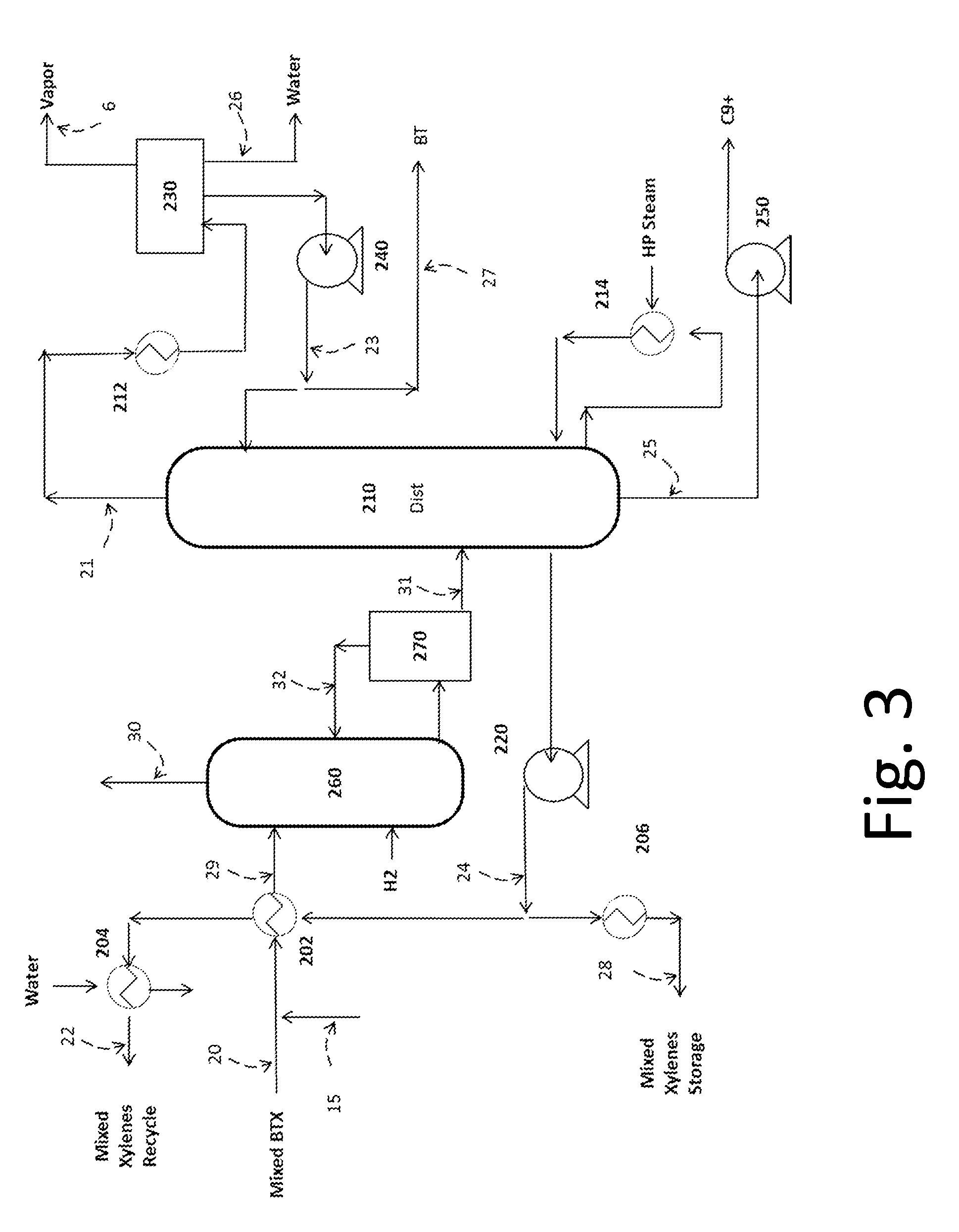Processes for converting biomass to btx with low sulfur, nitrogen and olefin content via a catalytic fast pyrolysis process
a technology of catalytic pyrolysis and biomass, which is applied in the direction of hydrocarbon oil treatment products, fuels, organic chemistry, etc., can solve the problems of pursuit of more expensive extraction technologies such as fracking and deep sea drilling, and high environmental and political costs, so as to promote and/or effect reactions, increase the rate of chemical processes, and reduce the activation energy
- Summary
- Abstract
- Description
- Claims
- Application Information
AI Technical Summary
Benefits of technology
Problems solved by technology
Method used
Image
Examples
Embodiment Construction
[0037]FIG. 1 shows an exemplary process for converting biomass to aromatics (BTX) and other components (C9+). Biomass is introduced and prepared in stage 10 by chipping, drying, grinding, or other processes, or some combination of these. The prepared biomass is introduced along with a recycle gas or transport fluid into the CFP reactor. The CFP reactor is a fluidized bed catalytic reactor that is fluidized by a portion of recycle gas or other fluid. The products from the CFP reactor are separated from some of the catalyst, minerals, or char that is carried along with the fluid stream in one or more cyclones. The catalyst from the cyclones and other catalyst removed from the reactor is regenerated in a catalyst regeneration system 50 in which the coke and char are combusted and returned to the reactor, or simply returned to the reactor. The raw fluid product is sent to a product recovery system 30 where the liquid products benzene, toluene, xylenes, naphthalenes, oxygenates, and othe...
PUM
 Login to View More
Login to View More Abstract
Description
Claims
Application Information
 Login to View More
Login to View More - R&D
- Intellectual Property
- Life Sciences
- Materials
- Tech Scout
- Unparalleled Data Quality
- Higher Quality Content
- 60% Fewer Hallucinations
Browse by: Latest US Patents, China's latest patents, Technical Efficacy Thesaurus, Application Domain, Technology Topic, Popular Technical Reports.
© 2025 PatSnap. All rights reserved.Legal|Privacy policy|Modern Slavery Act Transparency Statement|Sitemap|About US| Contact US: help@patsnap.com



